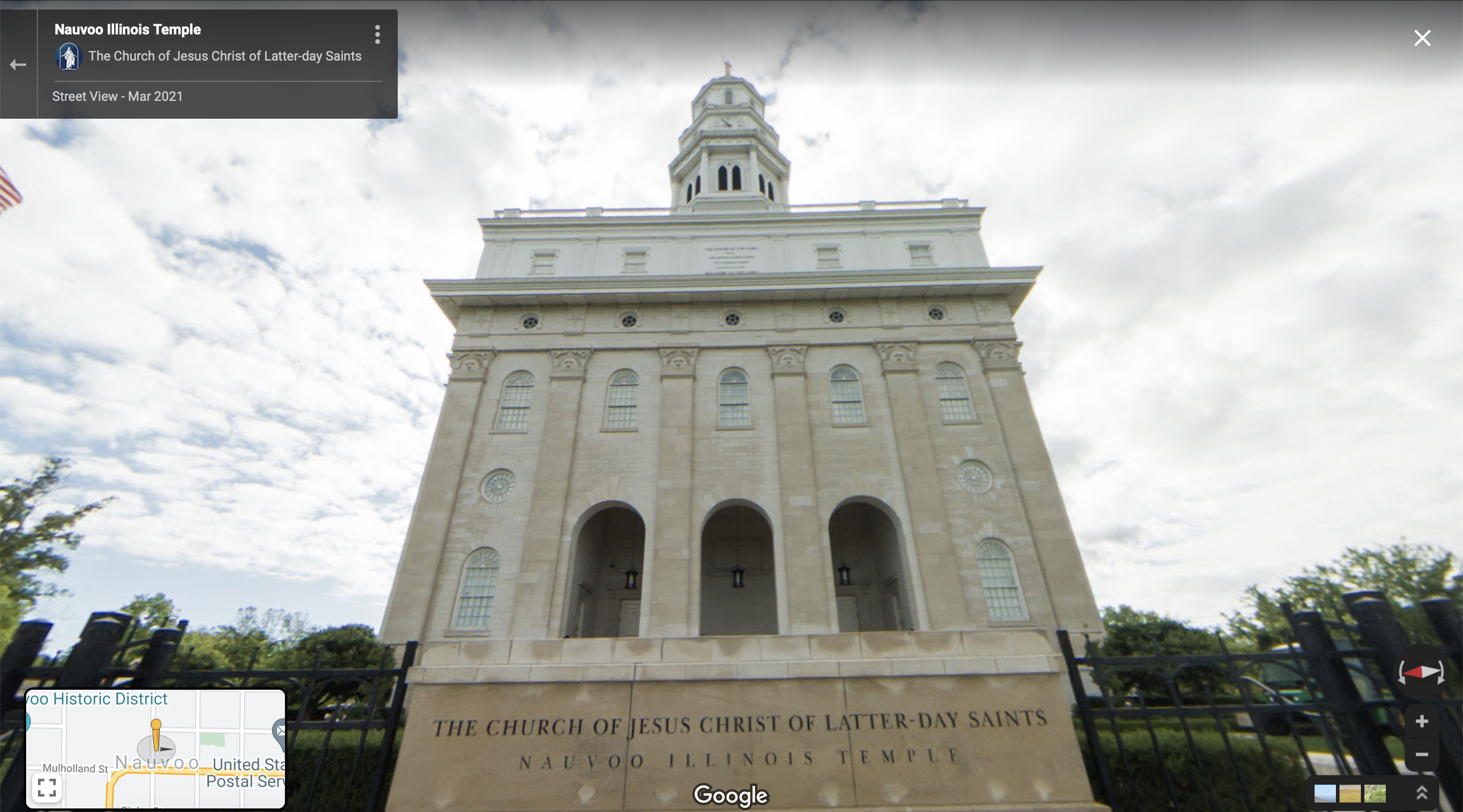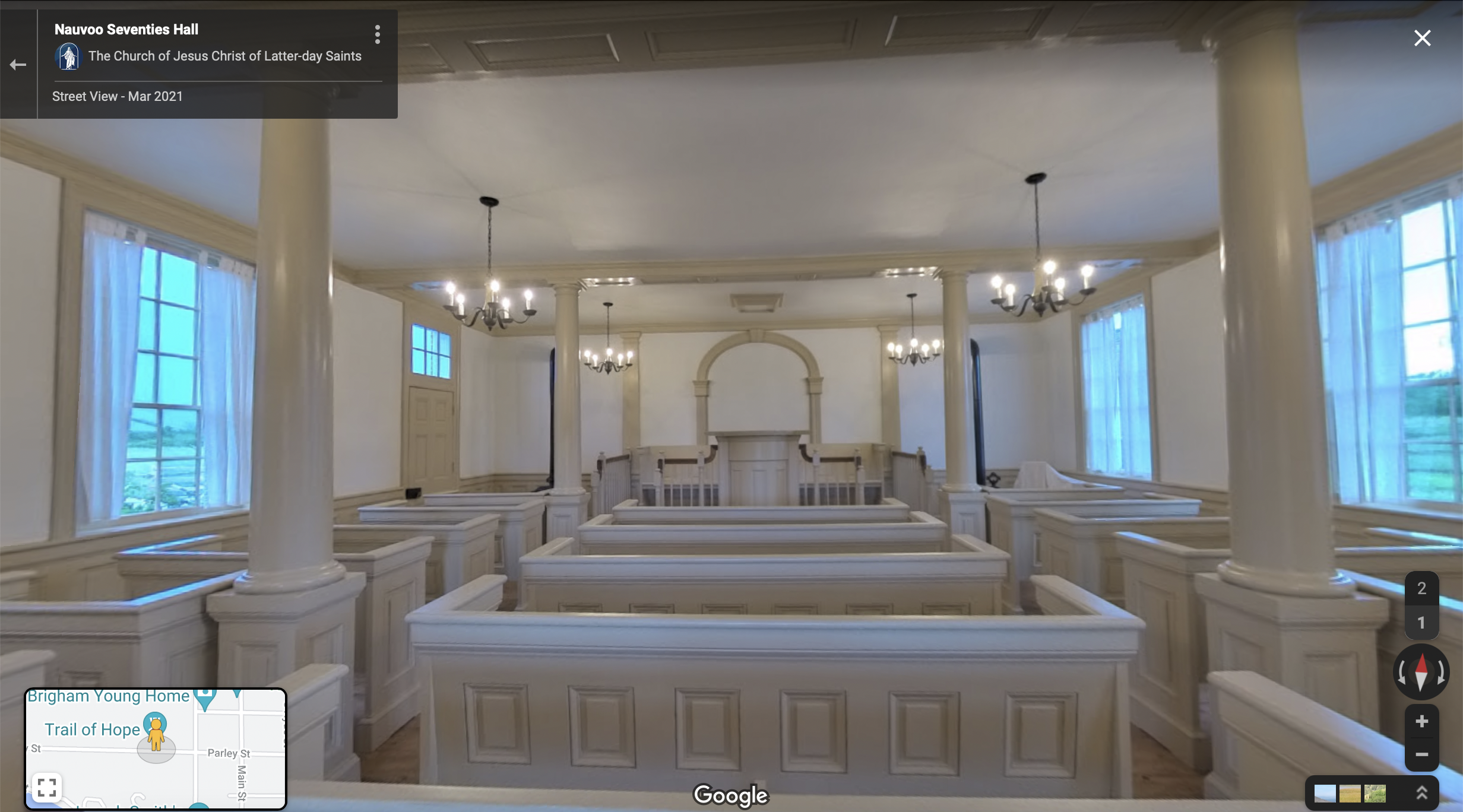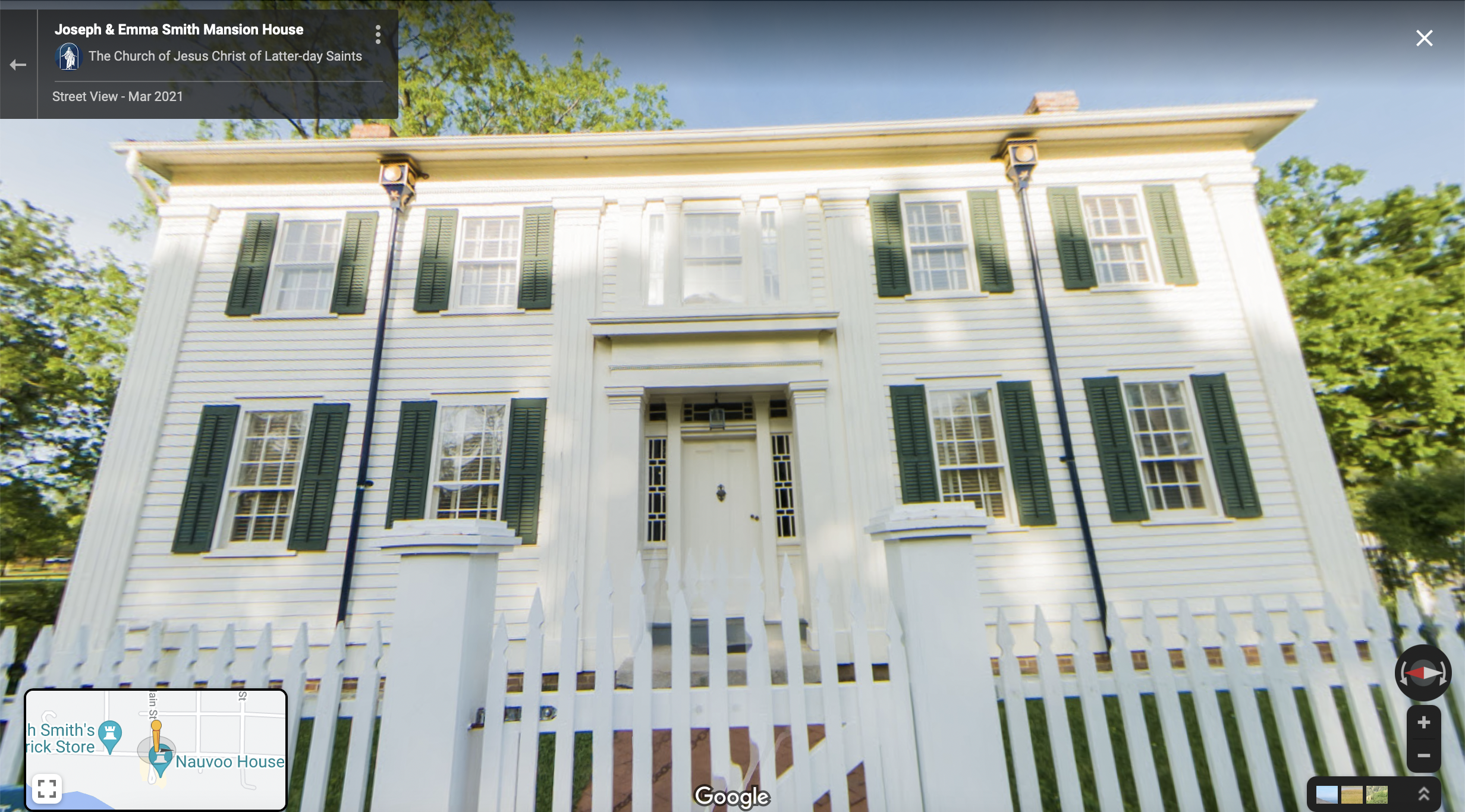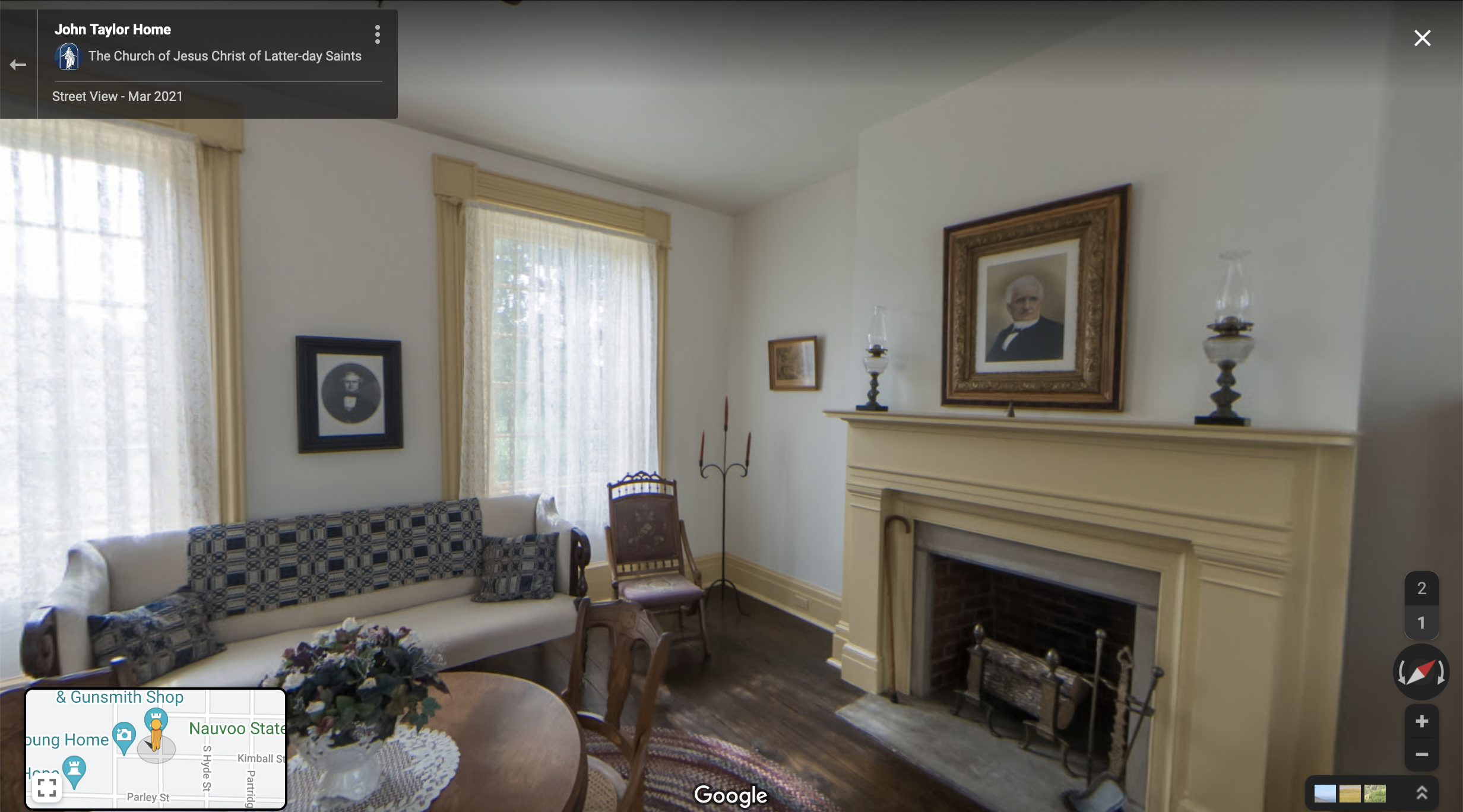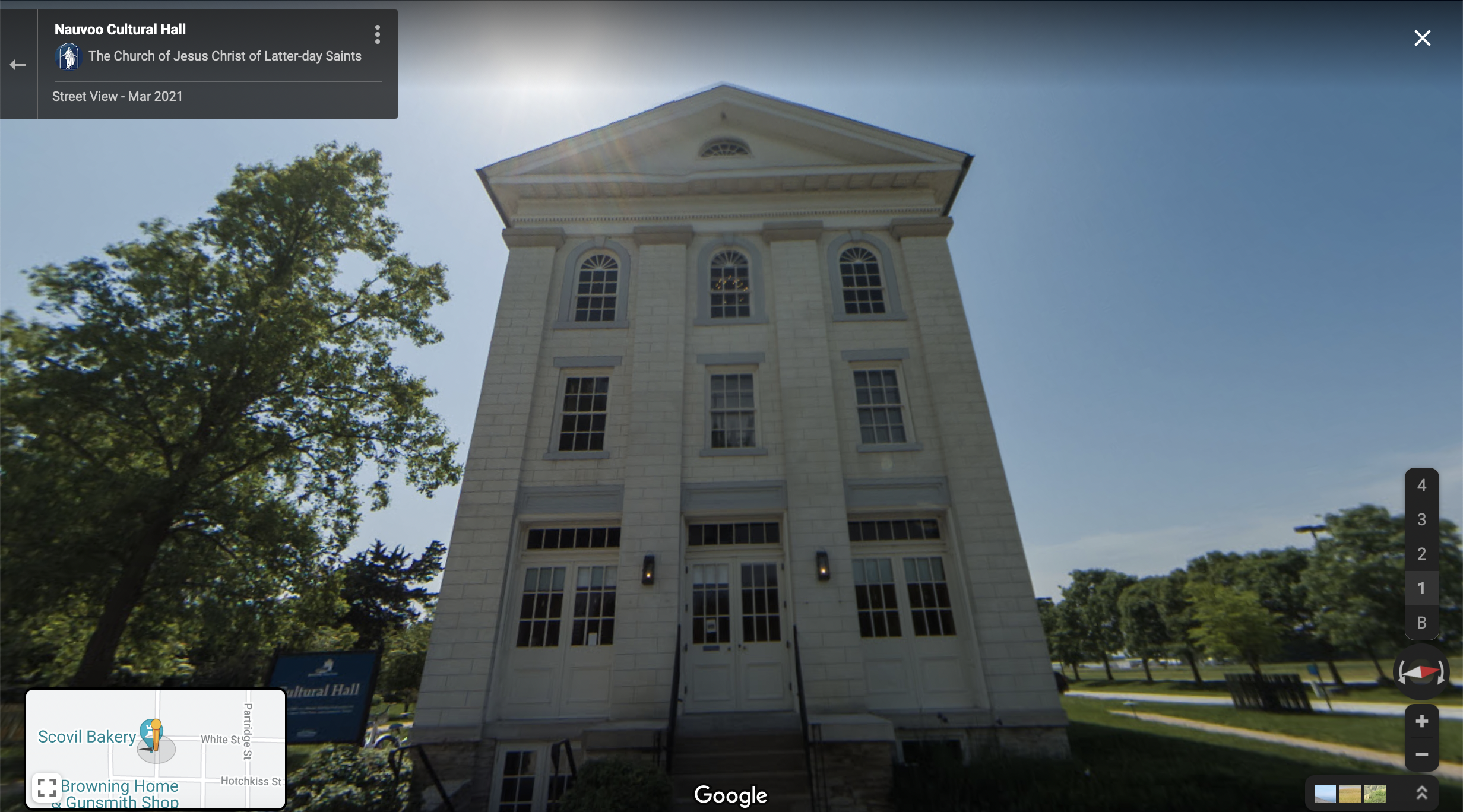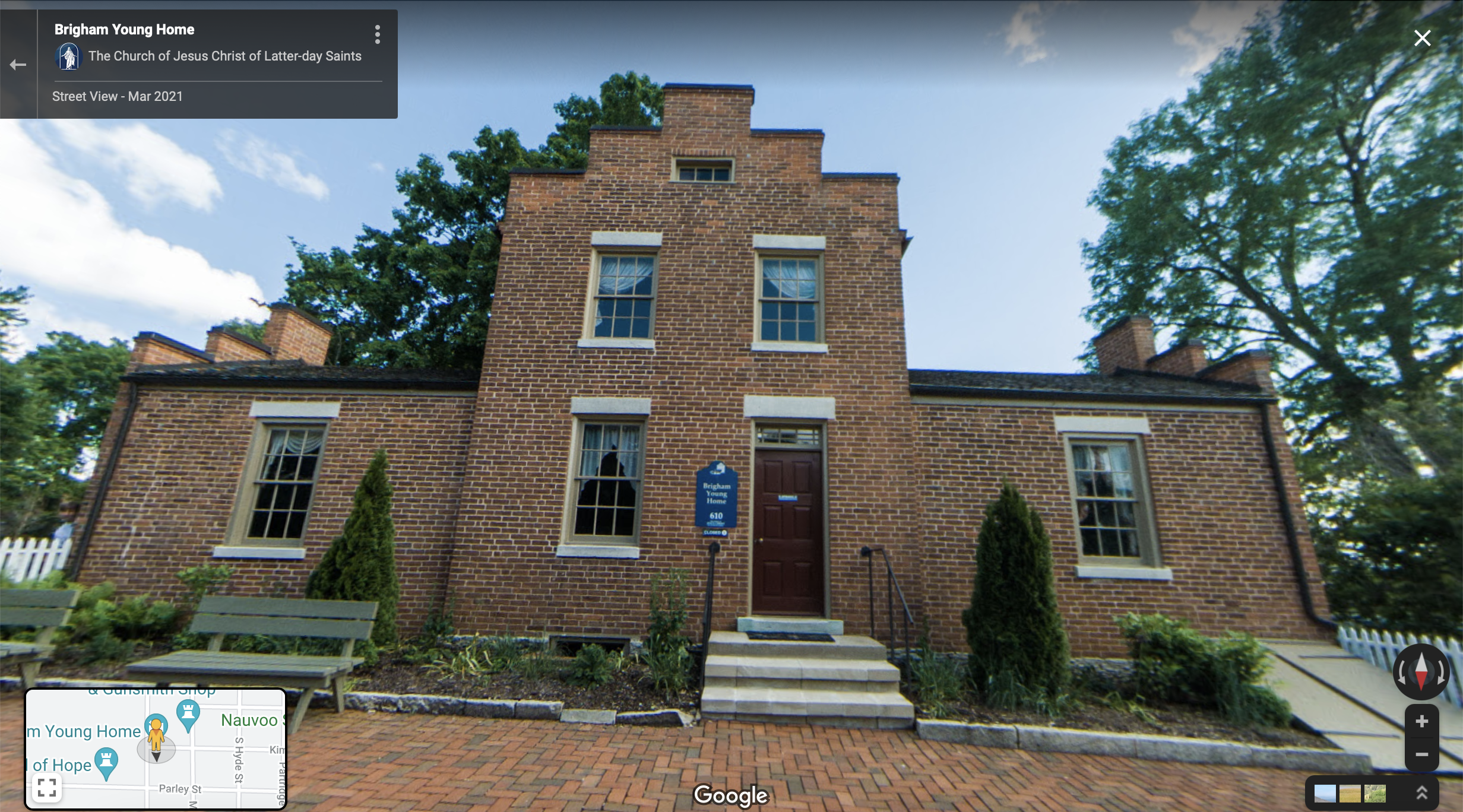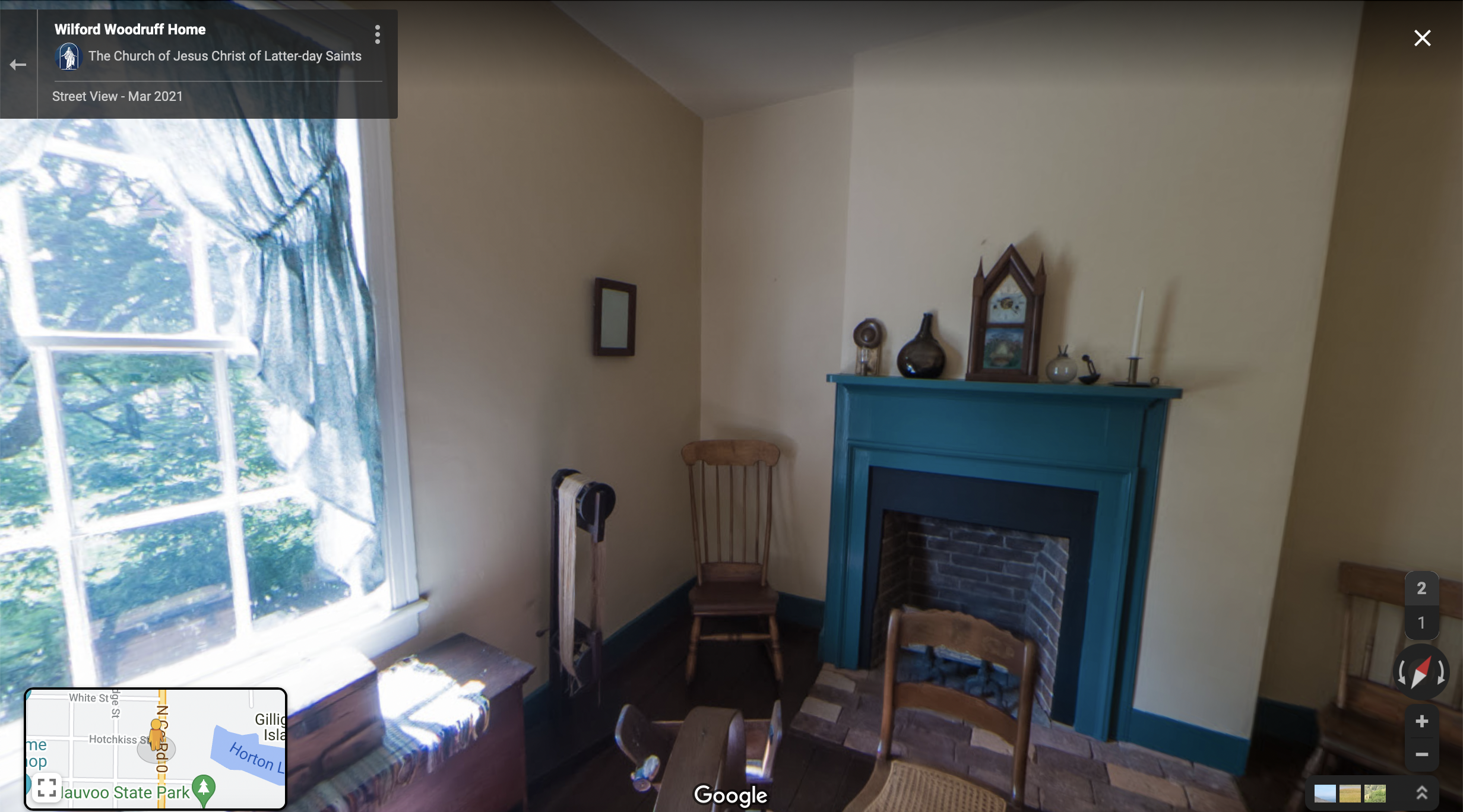/ Places of the D&C / Nauvoo, Illinois
Nauvoo, Illinois
1841-1844
Photo Credit: Christina Broberg, 2012
Significant Events At a Glance
- Relief Society Organized in 1842
- Proxy Ordinances for the Dead Introduced
- Endowment Introduced in 1843
- Burial Place of Joseph, Hyrum and Emma Smith
- Nauvoo Temple Built and Dedicated
D&C Sections Received Here
(Click for Section Study Helps)
(Tap for Section Study Helps)
Nauvoo Temple
Key Points of Interest
- In January 1841 the saints were commanded to build another temple
- The man who donated the land for the temple, Daniel H. Wells, later joined the church and became a member of the first presidency under Brigham Young
- The baptismal font, built in the basement of the temple, was dedicated 8 Nov 1841 and subsequently used for baptisms for the dead before the temple was fully completed
- Women of the church were inspired to organize a society to assist in the construction of the temple. This led to the formation of the Relief Society in March 1842
- Another portion of the temple, the attic, was completed 30 November 1845, dedicated, and used for administering the endowment during the winter of 1845-46
- By the time the temple in its entirety was completed and dedicated, most of the Nauvoo saints had already gone west: Joseph Young privately dedicated the temple 30 April 1846, and Orson Hyde dedicated it publicly the next day
- The temple was later destroyed: An arsonist set fire to it 9 October 1848, and in May 1849 a tornado broke down one of the walls. After that, the rest of the temple was dismantled, and the stones were used for other buildings in Nauvoo
- In April 1999 President Gordon B. Hinckley announced that the Nauvoo Temple would be rebuilt. The reconstructed temple was dedicated 27 June 2002
(Hover over photo for more information, click to enlarge)
(Tap photo to enlarge and see more information)
Nauvoo Temple from Northeast
Photo Credit: Kenneth Mays, 2004
Nauvoo Temple from Southeast
Photo Credit: Kenneth Mays, 2015
Nauvoo Temple from South
Photo Credit: Kenneth Mays, 2006
Nauvoo Temple Sunstone
Photo Credit: Kenneth Mays, 2013
Nauvoo Temple Inscription
Photo Credit: Kenneth Mays, 2002
Nauvoo Temple from Below Bluff
Photo Credit: Kenneth Mays, 2013
Nauvoo Temple from Flatlands
Photo Credit: Kenneth Mays, 2009
Nauvoo Temple from Flatlands
Photo Credit: Kenneth Mays, 2013
Nauvoo Temple Front
Photo Credit: Kenneth Mays, 2012
Prophet's Last Ride Statue
Photo Credit: Kenneth Mays, 2009
Nauvoo Temple Construction Crane
Photo Credit: Kenneth Mays, 2001
Nauvoo Temple Construction Tower
Photo Credit: Kenneth Mays, 2001
Nauvoo Temple Rear Construction
Photo Credit: Kenneth Mays, 2001
Nauvoo Temple Daguerrotype
Photograph by Thomas Martin Easterly
Red Brick Store
Key Points of Interest
- The Relief Society was organized in the Red Brick Store 17 March 1842
- Joseph Smith, Jr. introduced the temple endowment and first administered it to members of the church on the top floor of the store 4 May 1843
- Joseph completed the translation of the Book of Abraham in the store
- The store had multiple uses: The dry goods store and Bishop Newel K. Whitney’s office were located on the first floor, and the second floor was an assembly hall
- There were no banks in Nauvoo, but the store served as an economic hub—the store made loans and took collections for the construction of the Nauvoo Temple, and Joseph sold city lots out of the store
- The store was demolished in the 1890s, then rebuilt by Community of Christ in 1978-79
(Hover over photo for more information, click to enlarge)
(Tap photo to enlarge and see more information)
Seventies Hall
Key Points of Interest
- The Seventies Hall was built in 1844
- The building served as a meeting place for the seventies, an organization of the church focused on missionary work
- When the hall was being built, a tornado tore down one of the walls, so Brigham Young directed it be rebuilt with an extra layer of brick.
- The main floor served as a lecture hall and as a chapel
- The first library in Nauvoo was on the second floor of the Seventies Hall and housed books missionaries had brought back from their travels. Seventies offices were also on the second floor
- Brigham Young dedicated the hall December 1844, though the saints had already been using it before that point
- Here in August 1844, after the deaths of Joseph and Hyrum Smith, Sidney Rigdon told other leaders of the church that he should be the church’s guardian
- In the 1890s the building was demolished, but it was reconstructed in 1971-72, and the main floor has been restored to its appearance during the time the saints lived in Nauvoo. The second floor now houses a museum of artifacts
(Hover over photo for more information, click to enlarge)
(Tap photo to enlarge and see more information)
Seventies Hall
Photo Credit: Kenneth Mays, 2018
Seventies Hall from Rear
Photo Credit: Kenneth Mays, 2018
Seventies Hall front
Photo Credit: J. Welch, 2021
Seventies Hall from a Distance
Photo Credit: Kenneth Mays, 2008
Seventies Hall Entryway
Photo Credit: J. Welch, 2021
Seventies Hall First Floor
Photo Credit: Kenneth Mays, 2006
Seventies Hall Second Floor
Photo Credit: Kenneth Mays, 2003
Seventies Hall artifact
Photo Credit: Kenneth Mays, 1989
Joseph Smith Homestead
Key Points of Interest
- When the saints first arrived in Nauvoo, there were only a few standing homes. Joseph Smith, Jr. and his family moved into one of those homes, living there until the last ten months of the prophet’s life, and it became known as the Joseph Smith Homestead
- In the first stages of the growth of Nauvoo, the home only consisted of the log portion. The additional portions that we see today were added later
- Joseph and Emma often gave up their room in the home so that it could house those who were sick
- The home served as church headquarters for a time, while Joseph had no office
- It’s likely that Doctrine and Covenants sections 124-26 were revealed here
- The graves of Joseph, Emma, and Hyrum Smith are in the Smith family cemetery, just west of the home
(Hover over photo for more information, click to enlarge)
(Tap photo to enlarge and see more information)
Joseph Smith Homestead
Photo Credit: Kenneth Mays, 2008
Smith Homestead from Distance
Photo Credit: Kenneth Mays, 2013
Smith Homestead from East
Photo Credit: Kenneth Mays, 2008
Smith Homestead from East
Photo Credit: Kenneth Mays, 2009
Smith Homestead from East
Photo Credit: Kenneth Mays, 2018
Smith Homestead from West
Photo Credit: Kenneth Mays, 2008
Smith Homestead from Family Cemetery
Photo Credit: Kenneth Mays, 2008
Joseph, Emma and Hyrum Graves
Photo Credit: Kenneth Mays, 2002
Smith Homestead from North
Photo Credit: Kenneth Mays, 2008
Smith Homestead from North
Photo Credit: Kenneth Mays, 2009
Smith Homestead Before Repainting
Photo Credit: Kenneth Mays, 2002
Mansion House
Key Points of Interest
- The Mansion House was Joseph and Emma’s second home in Nauvoo, after the homestead. They moved into the home around late August 1843
- The Smiths often hosted guests to the city in a hotel wing of the home, usually charging them fare for their stay. In January 1844 Joseph leased the house to Ebenezer Robinson, who continued using it as a public-house
- Several ordinances were performed at the mansion house before the completion of the temple
- After Joseph and Hyrum died, their bodies were displayed in the Mansion House
- Emma continued to live in the home after Joseph’s death until she moved into the Nauvoo House in 1869
- The Mansion House is owned and maintained by Community of Christ, who give tours in exchange for a small preservation fee
(Hover over photo for more information, click to enlarge)
(Tap photo to enlarge and see more information)
Mansion House from Distance
Photo Credit: Kenneth Mays, 2012
Mansion House
Photo Credit: Kenneth Mays, 2013
Mansion House Sign
Photo Credit: Kenneth Mays, 2008
Mansion House from South
Photo Credit: Kenneth Mays, 2017
Mansion House from East
Photo Credit: Kenneth Mays, 2013
Mansion House Backyard
Photo Credit: Kenneth Mays, 2002
Mansion House from North
Photo Credit: Kenneth Mays, 2013
Mansion House Pit
Photo Credit: Kenneth Mays, 2018
Printing Office Complex
Key Points of Interest
- Joseph Smith, Jr. bought the printing office in 1842 and leased it to Wilford Woodruff and John Taylor
- John became the editor of the church newspaper in Nauvoo
- In January 1844 John bought the printing office, and after his home was lost in a fire, he and his family moved into the middle building of the complex
- The complex consisted of three structures: On the south was the printing office, on the north was the post office, and in the middle was John Taylor’s home
- In addition to three different newspapers, a hymnal, two editions of the Book of Mormon and other volumes of scripture were published at the print shop
- John operated the printing shop until it closed in March 1846
(Hover over photo for more information, click to enlarge)
(Tap photo to enlarge and see more information)
Nauvoo Printing Office Complex
Photo Credit: Kenneth Mays, 2017
Nauvoo Printing Office
Photo Credit: Kenneth Mays, 2007
Printing Office Typeboxes and Desk
Photo Credit: Kenneth Mays, 2006
Printing Office Typeboxes
Photo Credit: Kenneth Mays, 2006
Printing Office Press
Photo Credit: Kenneth Mays, 2006
Nauvoo Post Office
Photo Credit: Kenneth Mays, 2017
John Taylor Home
Photo Credit: Kenneth Mays, 2018
John Taylor Home Interior
Photo Credit: Kenneth Mays, 2004
John Taylor Home
Photo Credit: Kenneth Mays, 2004
Nauvoo House
Key Points of Interest
- This structure served as a boarding house and was created in response to a revelation given to Joseph Smith (see Doctrine and Covenants 124)
- Many items were deposited into the cornerstone of the Nauvoo House when it was laid, including the original manuscript of The Book of Mormon
- Construction on the house was postponed several times, once 1844 so saints could focus on the temple, and again in 1845 during persecution
- After Joseph and Hyrum were killed, their bodies were secretly buried in the cellar of the Nauvoo House for a time before being laid to rest near the Mansion House
- After Joseph’s death, the title for the house went to Emma
- A portion of the house was still unfinished by the 1870s, and that portion was used to construct the Riverside Mansion, where Emma and her second husband, Lewis Bidamon, lived until their deaths
- Lewis discovered the Book of Mormon manuscript in the cornerstone of the Nauvoo House, but it had suffered extensive damage. It was later acquired by the Church
- The property is owned by Community of Christ
(Hover over photo for more information, click to enlarge)
(Tap photo to enlarge and see more information)
Nauvoo House
Photo Credit: Kenneth Mays, 2009
Nauvoo House Incomplete Edge
Photo Credit: Kenneth Mays, 2018
Nauvoo House from South
Photo Credit: Kenneth Mays, 2013
Nauvoo House from North
Photo Credit: Kenneth Mays, 2013
Nauvoo House from Distance
Photo Credit: Kenneth Mays, 2006
Nauvoo House Bunk Beds
Photo Credit: Kenneth Mays, 2007
View of Mississippi from Nauvoo House
Photo Credit: Kenneth Mays, 2007
Nauvoo House Sign
Photo Credit: Kenneth Mays, 2008
Cultural Hall
Key Points of Interest
- Hyrum Smith dedicated the Cultural Hall 5 April 1844
- The building is three stories tall and served many purposes, housing theatrical productions, church meetings, funerals, police offices, the headquarters of the Nauvoo Legion, and meetings of the local Masonic lodge
- In total the building served about 26 different purposes during the saints' time in Nauvoo
- When the saints were forced to move west, the cultural hall’s benches were removed from the first floor, and the space was used for building wagon boxes
- When the saints left, the building was sold at auction for $4.50, and the third story was removed
- The Church purchased the building in 1967
- The third floor has been restored, and the building looks once again like it did during the saints' time in Nauvoo
(Hover over photo for more information, click to enlarge)
(Tap photo to enlarge and see more information)
Nauvoo Cultural Hall Front
Photo Credit: J. Welch, 2021
Nauvoo Cultural Hall Rear
Photo Credit: Kenneth Mays, 2013
Nauvoo Cultural Hall South
Photo Credit: Kenneth Mays, 2008
Nauvoo Cultural Hall Interior
Photo Credit: Kenneth Mays, 2004
Nauvoo Cultural Hall Interior
Photo Credit: Kenneth Mays, 2003
Nauvoo Cultural Hall Interior
Photo Credit: Kenneth Mays, 2012
Nauvoo Cultural Hall Interior
Photo Credit: Kenneth Mays, 2003
Nauvoo Cultural Hall Interior
Photo Credit: Kenneth Mays, 2012
Brigham Young Home
Key Points of Interest
- While Brigham Young was serving a mission in England, his wife, Mary Ann, moved with their children to Nauvoo, where they stayed in a partially constructed log home
- Once Brigham had returned from his mission, he set to work constructing this brick home for his family, which they moved into 31 May 1843
- Prayer meetings of the Quorum of the Twelve Apostles were often held here
- Ordinances were also performed in the home
- The home was restored in the early 1970s
(Hover over photo for more information, click to enlarge)
(Tap photo to enlarge and see more information)
Brigham Young Home Front
Photo Credit: Kenneth Mays, 2008
Brigham Young home from Distance
Photo Credit: Kenneth Mays, 2013
Brigham Young Home Rear Cellar
Photo Credit: Kenneth Mays, 2013
Brigham Young Home Rear Yard
Photo Credit: Kenneth Mays, 2003
Brigham Young Home Barn
Photo Credit: Kenneth Mays, 2012
Brigham Young Home Kitchen
Photo Credit: Kenneth Mays, 2002
Brigham Young Home China
Photo Credit: Kenneth Mays, 2004
Brigham Young Home Interior
Photo Credit: Kenneth Mays, 2012
Brigham Young Home Bedroom
Photo Credit: Kenneth Mays, 2003
Wilford Woodruff Home
Key Points of Interest
- In between serving missions Wilford Woodruff built his home in Nauvoo
- Wilford wanted to make sure his family was comfortable while he was serving, and he built a working fireplace in each room
- Wilford sold the home in April 1846 and went west with the saints
- Since being renovated in 1969, the home is open for public tours and displays items that belonged to Wilford and his wife, Phoebe
(Hover over photo for more information, click to enlarge)
(Tap photo to enlarge and see more information)
Wilford Woodruff Home
Photo Credit: Kenneth Mays, 2008
Wilford Woodruff Home Rear
Photo Credit: Kenneth Mays, 2005
Wilford Woodruff Home Fireplace
Photo Credit: Kenneth Mays, 2012
Wilford Woodruff Home Kitchen
Photo Credit: Kenneth Mays, 2003
Wilford Woodruff Home Interior
Photo Credit: Kenneth Mays, 2012
Edward Hunter Home
Key Points of Interest
- Edward Hunter joined the church in 1840 and moved with his wife to Nauvoo, Illinois, in 1842
- Edward Hunter served as one of Joseph Smith, Jr.’s bodyguards for a time
- While Joseph was being persecuted by those in opposition to the church, he hid in homes in and around Nauvoo. The Hunters’ home was one of the homes he stayed in
- While in the Hunters’ home, Joseph dictated Section 128 of the Doctrine and Covenants. It is suspected that this is also the place where he dictated Section 127
- The original home is no longer standing. The home now on the grounds is a reconstruction, built in 2020 and dedicated in 2021
(Hover over photo for more information, click to enlarge)
(Tap photo to enlarge and see more information)
Nauvoo Burial Ground
Key Points of Interest
- It's estimated that more than 2,000 people died in Nauvoo between 1839 and 1846, and many of them are buried here, including Bishop Edward Partridge, who died 27 May 1840
- The cemetery is located about 2 miles east of Nauvoo
- Not all the gravestones are legible, and a kiosk near the site contained names of those who died while living in Nauvoo, but it was destroyed in 2020 by weather
(Hover over photo for more information, click to enlarge)
(Tap photo to enlarge and see more information)
Jonathan Browning Home and Gunshop
Key Points of Interest
- Jonathan Browning joined the church in August 1840 in Quincy, Illinois. In 1843 he moved to Nauvoo, bringing his gun-repair business with him
- Browning invented the "sliding breech" repeating rifle, or harmonica gun, and is recognized as one of the great early gunsmiths
- Browning’s sons later started the Browning Arms Company in Ogden, Utah, a company that’s still in business today
- In the 1960s Browning’s home and gunshop became one of the first buildings in Nauvoo to be restored, thanks to contributions from his descendants
(Hover over photo for more information, click to enlarge)
(Tap photo to enlarge and see more information)
Browning Home and Gun Shop Front
Photo Credit: Kenneth Mays, 2017
Browning Gun Shop Front
Photo Credit: Kenneth Mays, 2013
Browning Home Front
Photo Credit: Kenneth Mays, 2013
Browning Shop North Side
Photo Credit: Kenneth Mays, 2008
Browning Gun Display
Photo Credit: Kenneth Mays, 2009
Browning Gun Shop Working Area
Photo Credit: Kenneth Mays, 2004
Browning Home China
Photo Credit: Kenneth Mays, 2009
Browning Home Interior
Photo Credit: Kenneth Mays, 2009
Browning Home Backyard
Photo Credit: Kenneth Mays, 2009
Browning Home Backyard Flowers
Photo Credit: Kenneth Mays, 2009
Browning Home Before Restoration
Photo Credit: The Church of Jesus Christ of Latter-day Saints

